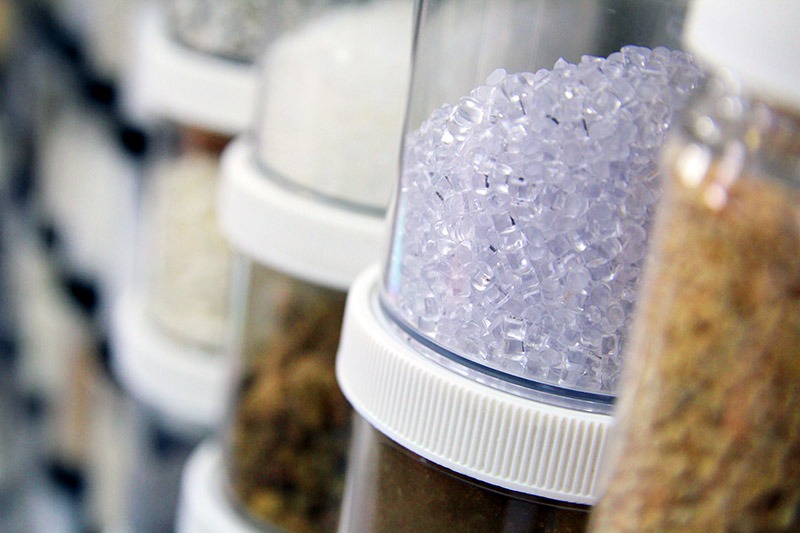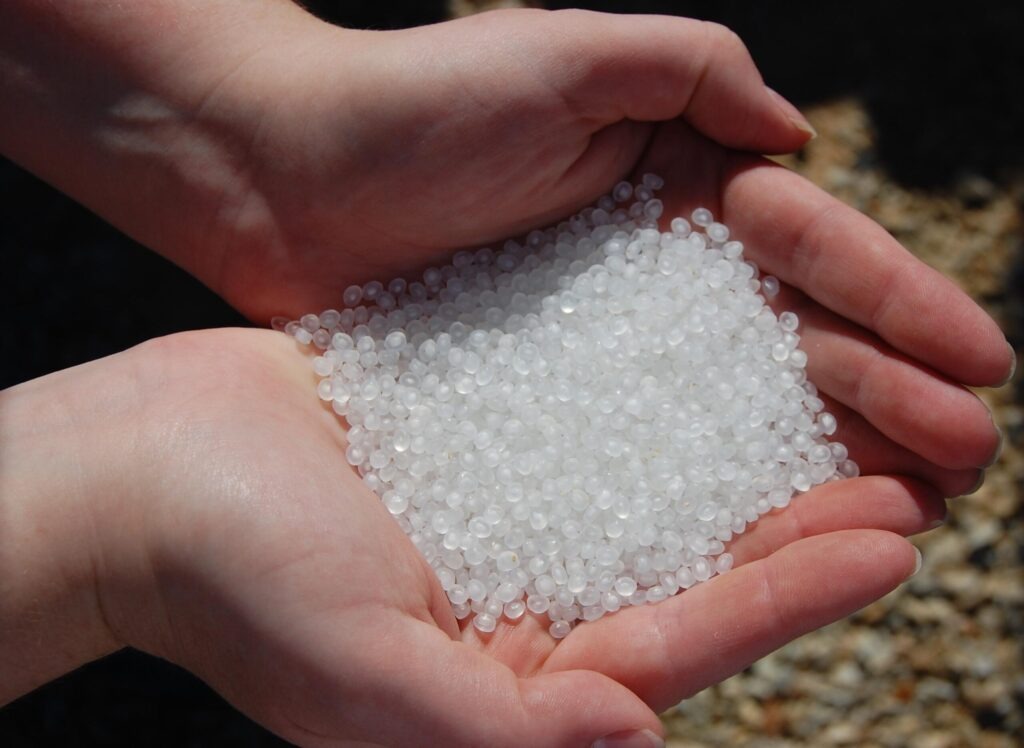Conveying Plastic Pellets
Increase capacity, productivity, and efficiency by pneumatically conveying plastic resin pellets
Plastic is lightweight, durable, cheap, and easily modified material with many applications across many industries. US Systems has decades of experience conveying plastic pellets. We size the systems we build around the type of material being conveyed. With plastic pellets, we have experience reducing the effect of fines and angel hair which can potentially cause inconsistency in the final product as some material will be deformed and not melt evenly.
About Plastic Pellets:
Plastic pellets, also known as resin pellets, are small, granular forms of raw plastic material used extensively in the manufacturing and processing of plastic products. These pellets are typically cylindrical or spherical in shape and range in size from 1/16 inch to 1/8 inch. They are produced through a process called polymerization, where monomers are chemically bonded to form polymers, which are then cooled and cut into pellets. The bulk density of plastic pellets varies, typically falling between 30 to 60 pounds per cubic foot when loose and 60 to 80 pounds per cubic foot when packed.
Plastic pellets are the fundamental building blocks for a wide range of plastic products, including packaging materials, automotive components, household goods, and medical devices. The composition of these pellets can vary widely, with common types including polyethylene, polypropylene, and polystyrene, each offering different properties suited to specific applications. For instance, polyethylene pellets are widely used in packaging due to their flexibility and chemical resistance, while polypropylene pellets are valued for their strength and durability in automotive parts.
One of the key benefits of plastic pellets is their ease of handling and transportation. They flow well, have low moisture content, and can be easily stored and conveyed using pneumatic systems. Additionally, their uniform size and shape allow for precise dosing and mixing during the manufacturing process, ensuring consistent product quality. Plastic pellets are also designed to minimize abrasiveness and corrosiveness, making them suitable for a wide range of industrial equipment.
Despite their many advantages, plastic pellets can accumulate static charge and may exhibit moderate hygroscopicity, meaning they can absorb moisture from the air, particularly those made from hygroscopic resins like nylon or PET. Therefore, proper storage and handling practices are essential to maintain their quality and prevent contamination.
Overall, plastic pellets are a versatile, cost-effective raw material that plays a crucial role in the plastic manufacturing industry, enabling the production of a vast array of products that are integral to modern life.

The Pneumatic Advantage
Pneumatic conveying systems have many advantages such as inherent dust control, routing flexibility, long convey distances, and high capacity. Less moving parts means more uptime and less maintenance. The line is completely cleared out of material, and the systems are well-suited for automation.

We’re Automation Experts
US Systems has talented, experienced industrial automation experts on staff. We have experience completely integrating all plant control systems into one SCADA system for full control over manufacturing processes, maintenance, and business analytics.
We have retrofitted brand new PLC’s and PC’s into a plastic pellet plant with four production lines. The results were fantastic. The system works smoothly and efficiently after the upgrade. We used Wonderware to historize the plant data so that trends can be analyzed and maintenance can be done before problems become more costly.
Avoiding Issues with Pellets
To avoid fines, streamers, angel hair, and snakeskins while maintaining high throughput rates, it’s essential to consider the temperature and velocity of the conveyed material, along with the impact of bends in the pipeline that cause friction. By analyzing the composition of the material being conveyed, we tailor the system to its specific properties, ensuring optimal performance.
Once installed and properly balanced, our pneumatic conveying systems significantly reduce maintenance efforts compared to mechanical conveyors. The lack of moving parts translates to increased uptime and lower maintenance and labor costs. Our customers are thrilled to reallocate operators from conveying material to other critical tasks, enhancing overall productivity and efficiency.
GENERAL PLASTIC PELLET CHARACTERISTICS:
| Characteristic | Description | Value |
| Particle Shape | The geometric form of the particles | Cylindrical or spherical |
| Particle Size | The dimensions of individual particles | 1/16 inch to 1/8 inch |
| Bulk Density | Mass per unit volume of bulk plastic pellets | 30 to 60 lb/ft³ (loose), 60 to 80 lb/ft³ (close packed) |
| Abrasiveness | Ability to cause wear on equipment | Low |
| Corrosiveness | Tendency to corrode materials it contacts | Low |
| Flowability | Ease with which the material flows | Good |
| Moisture Content | Amount of water present in the material | Typically low |
| Temperature | The operating temperature of the material | Ambient temperature |
| Chemical Composition | The elements and compounds present in the material | Mainly polyethylene, polypropylene, polystyrene |
| Cohesion/Adhesion | Tendency to stick to itself or other surfaces | Low |
| Compressibility | Ability to decrease in volume under pressure | Low |
| Wall Friction | Resistance to flow when in contact with container walls | Low |
| Cohesiveness | The degree to which particles stick together | Low |
| Hygroscopicity | Ability to absorb moisture from the air | Moderate (varies by plastic type) |
| Static Charge | Tendency to accumulate electrical charge | Moderate |
| Explosivity | Potential to cause explosions | Non-explosive |
| Melt Point | Temperature at which the material melts | Varies by plastic type (212-464°F) |
| Crystal Structure | The arrangement of atoms in the material | Amorphous or semi-crystalline |
| Form of Particles | The physical state of individual particles | Solid |
| Absorption of Odors | Ability to absorb smells | Low |

